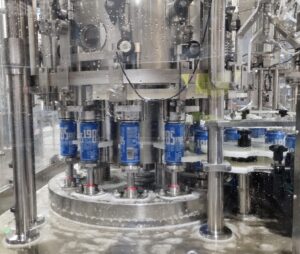As the demand of no and low beers continue to grow, let’s take a look a closer look at some of the trends driving this and how you can capitalise.
‘When America sneezes, the world catches a cold.”
It’s a saying you can arguably apply to many facets of modern life and the beer industry is one such example. Assessing recent figures emerging from the US, sales in the no-alcohol segment are not only growing but growing in the on-trade, too.
According to figures, total beer sales by value in the 12 months to mid-May showed a 2.9% dip year-on-year. But in contrast, the no-alcohol beer segment achieved growth of 33.7%. While beer’s rate of sale dropped 9.4%, rate of sale (RoS) in the non-alcohol segment rose 13.6%.
These numbers were recorded by CGA’s OPM service, which tracks the latest trends in US bars and restaurants to help suppliers and brand owners maximize trading.
The data also showed that alcohol-free beer generated a “sharp increase” in visibility and price. Total distribution points in the US swelled by 11.9%. This was nearly triple the 4.1% rate of growth across the beer category as a whole. “Average selling prices in the no-alcohol segment rose by 5.2%—well ahead of the all-beer increase of 3.0%,” the company said.
When it comes to styles of alcohol-free beer driving growth, pale lager remains the most popular type with a 55% share of the market, with sales by value up 8.0% year-on-year.
However, as segment matures non-alcoholic IPA’s, stouts and blonde ales are gaining share.
“The most eye-catching growth has come from Indian Pale Ale and blonde or golden ale, where sales have rocketed by 170.9% and 165.5% respectively. Stout has grown 133.9%, though from a smaller base,” they added.
Commenting, CGA by NIQ’s client solutions director, said: “While no-alcohol beer remains a relatively small element of US On Premise drinks sales, it’s one of the most explosive categories for growth.
“It’s powered by a global trend for moderation in alcohol intake as consumers focus more sharply on their health, and reinforced by the flow of new, distinctive and high-quality alcohol-free products from major-league beer brands.”
This direction of travel is echoed here in the UK. Recent data showed that total beverage alcohol (TBA) volumes in the UK declined by -2% between 2022 and 2023.
This capped a period of recent decline for the industry (2018-2023 volumes falling at a CAGR of -1%).
According to figures from ISWR which provides data, analytics and insights for the beverage alcohol industry, growth rates of the no- and low-alcohol segment outperformed the overall UK TBA market. This was partly driven by the ongoing consumer trend for moderation as well as excise duty changes.
The overall no/low-alcohol segment showed volume growth of 47%, 2022 to 2023, with forecast volume CAGR of +19%, 2023 to 2028. The no/low-alcohol segment is expected to add incremental value of £0.8bn by 2028, they said.
The company added that low-alcohol volume sales almost doubled in 2023 with IWSR expecting “considerable growth” over the next few years, particularly driven by low-alcohol beer.
“Many beer and wine brands are lowering their alcohol content (ABV) to take advantage of the UK’s new excise duty regime, although this is poised to bring renewed challenges for wine in particular when more changes are introduced during 2025, they concluded.









